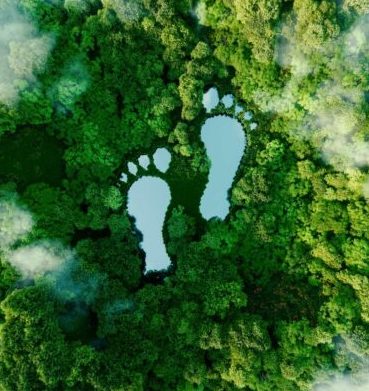Monday, June 30, 2025
The world is waking up to the global environmental crisis. Carbon emissions are raising temperatures to levels never seen before in human history, creating devastating consequences like extreme weather events, rising temperatures, and the melting of the polar ice caps.
But environmental destruction does not begin and end with carbon emissions. The global demand for products and land-use changes to accommodate human development have wreaked havoc on our biodiversity, driving animal populations to extinction and causing a rapid loss and degradation of natural habitats. It is an international crisis that countries, and industries, are working to address, finding solutions for restoring what’s been lost to protect those species on the verge of an erased existence. Because just getting life back isn’t the problem in efforts to protect biodiversity. Getting the diversity of life back that was there previously and restoring ecological processes and high quality habitats that support species of conservation concern is the real challenge.
There are key sectors in Canada, ones that previously had had a neutral or negative impact on biodiversity, that are working to take great strides to the protection and restoration of our natural habitats.
The Mining Sector
Mining is one industrial sector where the very nature of the work, resource extraction, means doing some damage to the natural ecosystem. Poor regulations in decades past, in jurisdictions all over the world, have led to irresponsible mining practices causing billions of dollars in damages. These damages, including those to the local and regional biodiversity, have become an environmental and social disaster in some places. Sometimes, these disasters are left to taxpayers to address. Here in Canada, the two largest mine remediation projects currently underway carry a combined price tag of approximately $1.4 billion based on the defined scope of work being done.
However, the industry is turning around, and biodiversity is becoming an important part of new and ongoing mining operations. And it’s not just the regulations that are causing the mining industry to take positive action.
“Many mining companies have internalized the importance of biodiversity and have specific ESG goals related to it, including objectives of achieving a net gain for biodiversity associated with their operations. The number of companies setting such lofty goals is growing steadily,” says Dr. Kyle Knopff, Principal, Senior Wildlife Biologist for WSP in Canada.
Planning for biodiversity is challenging for mining operations, especially in the wake of a growing number of provincial/territorial and national regulations that must be considered, including the Fisheries Act and the Migratory Birds Convention Act. Also, biodiversity offset requirements designed to address all of the residual impacts of a project, as well as achieve no net loss for some biodiversity elements (e.g., wetlands, species at risk), are becoming more prevalent in Canada, as seen with the Impact Assessment Agency of Canada’s recent Tailored Impact Statement Guidelines (TISG) template.
The Energy Sector
Power production, transmission and distribution is another sector that can have significant impact on biodiversity if mitigation needs are not addressed as part of project planning.
As renewable energy assets are introduced, and clean energy transmission systems are expanded, there is a greater physical footprint needed for the sector. And that physical footprint has an impact on biodiversity: solar farms prevent sunlight from reaching grasslands, wind farms can impact migratory patterns for birds, and transmission line systems can cut tracts of lands through forests and other natural ecosystems, causing habitat fragmentation.
“The transformation to a renewable energy landscape will require significant public and private investment. It will also require a greater emphasis on project design to optimize the project footprint and reduce the impacts of infrastructure implementation on biodiversity,” says Helene Chouinard, Biodiversity Specialist & Project Manager for WSP in Canada.
Government policies and international best practices in the sector are evolving as the sector transitions its technology, raising the bar for what providers must do to meet biodiversity commitments.
Finance Sector Acting on Biodiversity
As new projects look for private financing, investors are also now taking a closer look at a project’s biodiversity impacts before lining up to a sign a cheque.
“Investors are prioritizing ESG-conscious projects and companies,” says Patrick Lafrance, National Vice President of Ecology and Environmental impact assessment at WSP in Canada. “Financial companies are considering climate changes in their risk when investing, but biodiversity is also becoming a key risk to consider. We clearly see the increase in interest of some financial companies for natural capital and biodiversity assets to develop green and sustainable investment and portfolio.”
One of the global movements that the finance sector is involved in is the Finance for Biodiversity Pledge, launched in September 2020. According to the Pledge website, committed companies “have already committed to collaborating, engaging, assessing their own biodiversity impact, setting targets and reporting on biodiversity matters by 2024.” As of August 2021, the Pledge had 55 signatories from 15 countries managing a collective nine trillion Euros. Primarily driven by European companies, this initiative has reached North American shores, with two Canadian asset managers currently signed on.
Investments in biodiversity friendly projects and companies help financial institutions, investors and asset managers align with global ESG targets, unlock opportunities to invest in natural capital, and reduce the reputational risk.
Regardless of the sector, investments in biodiversity protection, rehabilitation and mitigation have become a vital component of asset development and rehabilitation budgets, as environment regulations have become more stringent. Those companies not factoring in biodiversity impacts are facing increasing financial impacts through government fines, but also reputational damage due to a growing global backlash against companies that ignore environmental impacts.
Want to learn more about how WSP Canada can help you meet your biodiversity targets? Check out our new biodiversity hub, or email our experts Kyle Knopff, Helene Chouinard and Patrick Lafrance directly.
Featured image courtesy of WSP in Canada.











